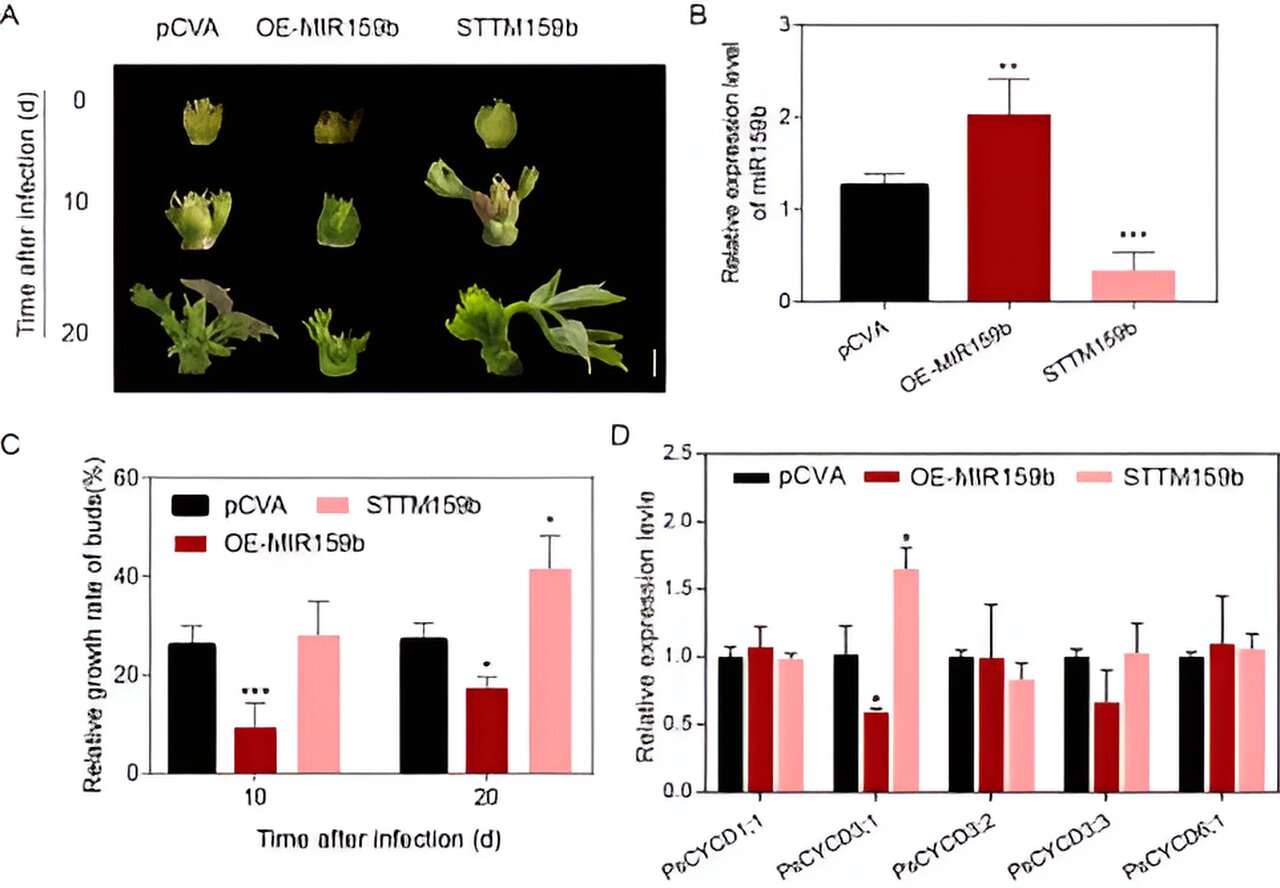In perennial woody plants, bud endodormancy is crucial for survival under adverse environmental conditions in winter, such as low temperature (LT) and dehydration stress. To break bud dormancy is essential for the resumption of bud growth and flowering. Tree peony (Paeonia suffruticosa Andr.), belonging to the section Moutan of the genus Paeonia and family Paeoniaceae, is famous for high ornamental and medicinal value and is also known as a newly cultivated oil plant.
As a perennial plant, tree peony undergoes endodormancy in late autumn. However, due to a poor understanding of the dormancy release mechanism, there are still many production problems, such as flower abortion, branch shortening, and abnormal leaf and flower formation in practice, which significantly reduce commercial value and hinder the development of the tree peony industry.
Recent studies have elucidated the regulatory network of ABA and DAM (Dormancy Associated MADS-box) in modulating bud dormancy. The bioactive gibberellins (GAs) also contribute to bud dormancy release, and exogenous application of GA quickly breaks the bud dormancy of tree peony. However, the mechanism of GA regulating dormancy remains poorly understood.
Horticulture Research published a research paper titled “PsmiR159b-PsMYB65 module functions in the resumption of bud growth after endodormancy by affecting cell cycle in tree peony” by Professor Shupeng Gai of Qingdao Agricultural University.
The research explores the miR159b-GAMYB module, a classical and conservative module of GA response functioning in several physiological processes. However, its role in dormancy regulation remains unclear. In this study, PsmiR159b is highly abundant in dormant buds, and low-temperature accumulation suppresses its expression in tree peonies.
STTM (short tandem target mimic) silencing and overexpression analysis reveals that PsmiR159b inhibits bud dormancy release. Genetic analysis and degradation experiments demonstrate that PsmiR159b targets PsMYB65. PsMYB65 has the characteristics of transcription factors and plays an activation role by its TRD (transcription regulatory domain).
The prolonged chilling and exogenous GA3 induces PsMYB65, and PsMYB65 silencing delays bud burst and presents a lower relative growth rate. Transcriptomic analysis of PsMYB65-silenced buds identifies the differential-expressed genes that are significantly enriched in the cell cycle and DNA replication pathway, among which PsCYCD3;1 is significantly down-regulated and contains an MYB-binding element on its promoter.
Y1H, EMSA, and dual luciferase report assays to confirm that PsMYB65 activates PsCYCD3;1 expression by binding to its promoter. Furthermore, silencing of PsCYCD3;1 inhibits cell division and delays bud burst. This study reveals that PsmiR159b-PsMYB65 modulates bud dormancy release by affecting the cell cycle in tree peonies, a novel pathway of GA regulating bud dormancy release, and provides excellent gene resources for the molecular breeding of tree peony flowering.
More information:
Tao Zhang et al, PsmiR159b-PsMYB65 module functions in the resumption of bud growth after endodormancy by affecting the cell cycle in tree peony, Horticulture Research (2024). DOI: 10.1093/hr/uhae052
Citation:
Researchers discover mechanism regulating bud dormancy release in tree peony (2024, April 24)
retrieved 25 April 2024
from https://phys.org/news/2024-04-mechanism-bud-dormancy-tree-peony.html
This document is subject to copyright. Apart from any fair dealing for the purpose of private study or research, no
part may be reproduced without the written permission. The content is provided for information purposes only.

